
Here at ScriptPhD.com, we pride ourselves on being different, and we like thinking outside the mold. So for Earth Day 2010, we wanted to give you an article and a perspective that you wouldn’t get anywhere else. There is no doubt that we were all bombarded today with messages to be greener, to use less, to be more eco-conscious, and to respect our Earth. But what is the underlying effect of advertising that collectively promotes The Green Brand? And has the Green Brand started to overshadow the very evil—environmental devastation—it was meant to fight to begin with? What impact does this have on the future of the Green movement and the advertising agencies and media that are its vocal advocates? These are questions we are interested in answering. So when we recently met Matthew Phillips, a Los Angeles-based writer, social media and branding expert, and the founder of a new urban microliving movement called Threshing, we were delighted to give him center stage for Earth Day to offer his insights. What results is an intelligent, esoteric and thoughtful article entitled “Plastic Beads and Sugar Water,” sure to make you re-evaluate everything you thought you knew about going green. We welcome you to contribute to (and continue) the lively conversation in the comments section.
“Access to land provides access to food, clothing, and shelter—which means access to land provides the possibility of self-sufficiency—if anyone wants to maintain a dependent (and therefore somewhat dependable) workforce, it’s crucial for you to sever their access to land. It’s also crucial that you destroy wild foodstocks: why would I buy salmon from the grocery store if I could catch my dinner from the river? Now, with people having been effectively denied access to free food, clothing, and shelter, which means having been effectively denied access to self-sufficiency, if they are going to eat, they’re gong to have to buy their food, which means they’re going to have to go to work to get the cash to buy what they need to survive. If you’re a corporation, you’ve got them where you want them.” —What We Leave Behind.

I have a great deal of admiration for our original permaculture engineers, the American Indians, all grass fed bison advocates. Looking back, we can’t imagine how naive or gullible they were to accept fire, water, plastic beads and useless trinkets in exchange for their healthy animals, fresh fruits and vegetables, consulting knowledge, and land—whose value is incalculable. Interestingly, here we are 518 years later, and we’ve all been duped into giving up our valuables for well marketed sugar water, and filtered tap… in plastic bottles.
After 1492 the American colonization effort was dominated by the European nations. In the 19th century alone, 50 million people left Europe for the Americas with ‘old world’ diseases, and a manifesto to massacre, obliterating 42 million American Indians. Everything changed; the landscape, population, plant and animal life. A few pioneers with rebel attitudes proved they could kill, conquer, and dominate an entire people and their land. What have we learned? When you deprive a group of people access to their land, you dominate and control their self-sufficiency, and ultimately their sustainability.
Earth Day was designed from its inception, April 22, 1970, to inspire awareness and appreciation for the Earth’s environment. Like all successful grassroots movements, Earth Day continues to self-organize and experiences annual growth. Over the years, it has propagated thousands of related causes or brands. This celebration gives us the opportunity to contemplate how to purchase food and drink that are produced locally through natural, sustainable methods. Whether we graze together, or barbecue grass-fed bison, I anticipate that many foodborne conversations will thresh organic ideas that seed new urban backyard businesses, and energize sustainable causes.

In fact, in this past year, we have witnessed local production and sustainable social causes grab the wheel from the generic “Green” brand. ‘Local and sustainable’ terms have the potential to drive significant impact in helping redefine a movement whose banding terminology is arguably out-of-focus. The Green goal has not achieved our Garden of Eden fantasy. Many generic Green causes have become distracted watching, and often joining, the fight against their ‘evil,’ instead of cultivating community and encouraging positive purposeful action. We’ve seen new Green causes sprout through PR dusting designed to crowd out similar already established causes. There’s nothing wrong with competition, seeking a bigger audience, news, press, and ultimately funding, but often the next new Green cause articulates greater Green evils in an attempt to further establish its reason to rally. This problem is churned up further with traditional reports broadcasting emotionally charged sound bites. Reporters often don’t take the effort to dig past the easy emotional approach, and into the rich cream of the cause itself. It is much easier to philosophize about the negative, which can feed our illusion of intellectual superiority, but it’s really keeping our callus-free hands from getting dirty planting GM-free maze in the garden and producing oxygen. “The creation of something new is not accomplished by the intellect but by the play instinct acting from inner necessity. The creative mind plays with the objects it loves,” said Carl Jung.
A great brand seeks to unify in a cyclical system: Magnetizing believers, educating, generating action, and finally producing evangelists, who then magnetize new believers and so on. Memorable brands are most effective when they are communicating their power and concept through story. At its most basic, a brand’s story is made up of the hero, (relating to the brand’s reputation and hopefully positive recognition), and its evil, (the perception of what hinders recognition of the brand). Clarifying the adversaries of the brand can help to ‘rally the troops,’ codifying their cause and movement. Without an adversary, it’s often difficult to get enough of a rouse from fellow partners to get anything started.

Every great brand needs an evil to fight, but Green’s evil has metastasized into the most unimaginable catastrophe that no cause could ever compete against—an over heating planet. Since it doesn’t get much worse than a gooey globe due to our ongoing abuse, this heat enemy seemed guaranteed to become THE unifying force, an evil that we could all fight together to overcome. The problem is the scope is too large to control or confine. It has mutated. Proving global warming has the potential to fracture the green community, and along the way has produced a number of serious critics. Terms like ‘climategate,’ and climate skeptics like Doug Keenan, continue to look at research they say is embellished to promote climate change. Maybe worshiping the over heating demon has made the ‘Green’ brand seem boring compared to the excitement of the fight. Google never defined its “Don’t be Evil,” last minute tag, which is part of the reason it continues to generate conversations across the board. Google has essentially allowed all of us to insert our own definitions of evil, which in effect has unified greater numbers to their brand. A very novel approach.
If the evil of a brand consistently gains more press than the cause, then the evil assumes and replicates the identity of the brand. When this happens, the brand is no longer the host. When the evil forcefully sucks all the nourishment from the brand’s beating heart, then the evil we were fighting becomes the cause. We feel more comfortable with our fingers on the keyboard dealing intellectually with evil, which in effect, removes our foot from the shovel of physical, sweaty action. Do we want to get back to the heart of the brand, the original cause? Harley Davidson, once perceived as the brand of choice for rebels and tattooed ex-cons, re-branded itself and become the hog of choice for everyone who could scrape together enough money, regardless of prison experience, body type, tattoo placement, or gender. Even our kids wear official HD branded fashion with pride.
If we stop promoting the evils, real or manufactured, and start encouraging positive actions and solutions, (often positive action is the best offense against perceived evil anyway) we’ll find passionate people that want to join us in healing our people and planet. The strategic approach to refresh a brand is extremely important if it is to succeed. Digitally empowered consumers want to punish those that don’t behave in a socially responsible way and reward those that do. Social media has given people real power to act, and also to be negative. “Social media is inherently more negative than a positive medium on many levels,” said David Jones, the global chief executive of Havas Worldwide. “Lots of stuff that is passed around is negative. If you are a brand or a company today you should be far less worried about broadcast regulations than digitally empowered consumers.”
Many will continue to base their directive on creating new enemies, using ‘the fight’ to impassion those around them to rally their cause. Stop depleting the ozone layer, reduce your carbon footprint, global warming. All grand Green, but terminology that is technically fear-focused. We’ve heard the pitch: “It is your investment of $59.95 that allows us to partner together to fight this injustice.” The fear based, negative approach is almost always wrong, (unfortunately, it can be effective) . It’s a slippery slope, and those who don’t fully embrace the creed, are either stamped ‘stupid,’ or ostracized. But sustainability should be positive at its core. There is a time to debate, and we’ve debated ourselves into the greatest recession any of us have ever experienced. It’s time to stop debating.

Let’s begin by forming communities that build sustainable ventures together. If we are fighting, or politicking, we are not building. “We have become divided into so-called red and blue states, an outcome directly traceable to the urban-rural division of our society. This is something of a simplification, but food producers and their social allies tend to vote red and food consumers and their social allies tend to vote blue. The division is thought to be between conservative and liberal philosophies, but it much more reflects the difference between rural and urban values,” said Gene Logsdon.
There are two real challenges within the sustainability movement:
1) Consumers’ decisions (especially with food) are splintered by: A) Convenience, B) Tradition, C) Bias, and D) Beliefs.
2) Industry’s “manufactured demand” is affecting consumers with: A) Deceptive advertising, B) Ambiguous terminology, C) Perfectly designed plastic convenience packaging sealing our addictive lifestyles.
The minute we wake up we are subjected to an eco-plastic, part of this complete breakfast, 100% edible, industrialized high fructose corn syrup, brand campaign. Industrialized conveyor belts are pumping out a marketing product of starch coated with refined sugar. We can reignite our camaraderie by producing fruits, vegetables, animals and vehicles that not only compete, but surpass, our current available choices; all sponsored of course by our very green desire for sustainability. Incidentally, the average number of ‘green’ products per store almost doubled between 2007 and 2008. Green advertising almost tripled between 2006 and 2008. Does this necessarily mean we are heading in the right direction?
Governmental regulations for consumer protection in industrial food processing plants have only added to an already over stressed food system. This industrialized hyper-efficiency has caused diseases in animals and bugs on crops that have been taken so far out of their natural ecosystem that they can no longer produce without heavy use of antibiotics and pesticides. These measures, of course, were designed to keep us safe, but instead have become another major concern since “packaged nourishment” comes from the industrialized, often treated, food system.

Creatives are beginning to find and tell the stories concerning the overly subsidized and industrialized food and distribution system which favors use of pesticides and antibiotics. Since the government historically is not very good at spearheading movements, artists (media pioneers, authors) and social entrepreneurs will continue to fill this leadership role. We don’t have to look far to see powerful results. Thank the documentary filmmakers of Food Inc., Supersize Me, HomeGrown, The Future of Food, Story of Stuff, and Bottled Water, for helping us become visually aware of how industries have been deceiving consumers and themselves in their interest of greed and everyone’s desire for convenience. But there is hope, and it’s simple. Consumers are communicating online like never before, this leads to uniting together to strategically direct where we spend our hard earned bread and where we plant or raise our own food.
Jamie Oliver’s new TV series, The Food Revolution, has exposed the frozen fat underbelly of pre-packaged (brown and gold) foods, and government charts that officially dictate the clogging of our kids in school. Local and “real” food production and consumption has become a legitimate genre, with universities, and high schools requiring reading of titles like Barbara Kingsolver’s Animal, Vegetable, Miracle, Michael Pollan’s Omnivore’s Dilemma, Bill McKibben’s Deep Economy, among others. These authors are helping us move past intellectual reasoning and into action. Since Timothy Ferrass taught us how to achieve a four hour work week, some of us among the fortunate now have the extra time to plant some seeds, water, and grow great big vegetables, and share them with our friends and neighbors.
I believe that in the next decade we will see less of an emphasis on extrinsic, materialistic values and more on intrinsic, spiritual values. This shift in emphasis will begin to bear fruit with the collaborative grafting between creative media pioneers and social entrepreneurs who seek to disrupt the status-quo. Research from San Francisco State University has shown that experiences bring people more happiness than material possessions. Experiences shared with others continue to provide even greater happiness through memories long after the event occurred. I believe many social entrepreneurs and creative media pioneers, in their hearts, believe their core purpose is to encourage our return to a sustainable world ecosystem. In other words, many will forgo Hummer-sized riches in order to nurture the successful adoption of their creations into society. There remains however ambiguity in the complexity that lies between the producer and the consumer. The ancient system of distribution gives middlemen the leverage to manipulate both producers and consumers. This too is evolving, as producers return to their roots and begin to distribute locally. There is change in the air, spring is coming.
We are at such a nascent stage in the evolution of the sustainable movement. The infrastructure necessary for the modern city to relocate to the farm is exorbitant, but the farm is beginning to integrate into the metropolis, one yard at a time. ‘Off the grid’ produces many wonderful connotations. It is an adventurous subject, one that I’m convinced will help propel this branding conversation forward. I wonder who else is discussing the connections of the ideas from this article, and from the authors and media pioneers mentioned? Who are the artisans, and social entrepreneurs that are working on this? Very curious about your thoughts. Please don’t hesitate to email me, and please act.
Let’s continue to find new ways to unify this brand with wonderful heart felt stories about the adventures of locally produced products, urban farms, and sustainability.
Writing this has given me a renewed appreciation for early American Indian cave drawn stories of food: adventure, and victory. There is more there than I had imagined.
Matthew Phillips is a media producer, writer and technologist working in Los Angeles, CA. He is the producer of Threshing.
*****************
ScriptPhD.com covers science and technology in entertainment, media and advertising. Hire our consulting company for creative content development.
Follow us on Twitter and our Facebook fan page. Subscribe to free email notifications of new posts on our home page.
]]>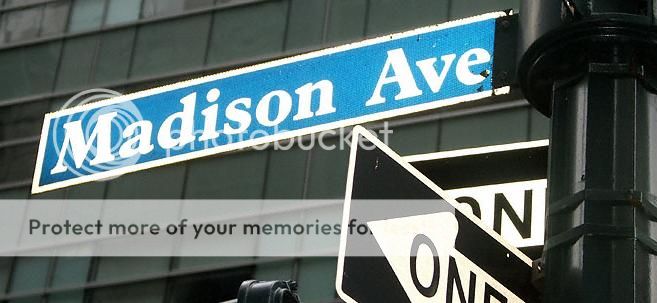
Much of today’s messaging about the environment, green initiatives and ways for the public to make a difference physically and fiscally are centered around media and advertising. To wit—even amid the deepening recession, one market has seemed to defy the economic downturn: green and environmentally-friendly product launches. Sadly, however, a large and growing subset of the eco-conscious creative collective is enveloped in hyperbole and hubris, a term the industry has labeled “greenwashing” that we will discuss in much greater detail in another article. It was natural then, that as part of our Earth Week coverage, ScriptPhD.com undertook green advertising as part of our continuing “Selling Science Smartly” series. Here, we profile a case study of several impressive (and effective) campaigns by the West Coast-based RIESTER, including
work on recycling, clean air, and the first fully-integrated municipal sustainability campaign in the US. We also had an opportunity to speak with RIESTER’s executive team, who provided insights into their creative strategy, why green advertising is more challenging than ever before, the crucial importance that interactive played in their success, and why every agency should be blogging more.
Campaigns: CalRecycle’s “Bottles and Cans” and STAND FOR LESS campaigns; Maricopa County’s Clean Air Make More Campaign (print, television, interactive)
Agency: RIESTER (Los Angeles, Phoenix, Salt Lake City)
Industry: Environment, Sustainability
If it seems like RIESTER is ideally suited to forge new ground in environmental advertising, they are. As a self-described ensemble of “brand activists,” RIESTER has taken on important social, health, technology and sustainability causes that transcend any individual campaigns or creative material. They’ve woven impact into the fabric of their 20-year identity to become one of the largest independent advertising and public relations firms in the United States. Their “Great Salt River” cleanup campaign resulted in one of the greatest single-day volunteer turn-ups in American history. A mid-90s shocking anti-tobacco campaign was so successful in curbing teen tobacco consumption, that it garnered the attention of major national media outlets. Likewise, their campaign with Gold’s Gym partnered with the American Diabetes Association, and gym members, to fight America’s growing obesity problem. Having written extensively about the environment on their blog, RIESTER has shown dedication and commitment to impacting real change with meaningful, long-term work. Here are several of their recent efforts.
A clever, funny spot devoted to clean air awareness in Maricopa County, Arizona (notoriously fraught with pollution and smog problems):
In 2009, San Diego became the first city in America to initiate a fully-integrated sustainability marketing campaign to encourage citizens to use less energy, water and vehicle mileage and to recycle more. Here are a series of television spots for the San Diego STAND FOR LESS Campaign:
And finally, an exceptionally smart, unusual ad for the California Department of Conservation touting the value of recycling from a most different perspective:
Why we like it:
Plain and simple, these campaigns are different. RIESTER has managed to tap into a creative channel that reaches its audience in a new, clever, sly way. When was the last time you saw a commercial or billboard about recycling that anthropomorphized the object being recycled? The answer is probably never. More than likely, the spot you saw showcased sad pictures of yet another ravaged, pillaged section of our fraying Earth, or graphics touting the benefits your behavior has to our environment. This spot takes those arguments, and flips them 180 degrees. It’s cute, it’s funny, and that bottle has some kind of attitude! The result? Since the campaign’s launch, California increased their recycling rates by 16%. Likewise for the Maricopa County clean air spot. Arizonans are constantly bombarded with appeals and rations stave off pollution problems. This commercial is flat-out ridiculous… and ingenious. Even in Beijing, one of the most consistently over-polluted cities in the world, people don’t walk around holding their breath from one location to the next. But the spot is positing an over-exaggerated situation to have people imagine a time when we would have to do such an unthinkable thing, and in turn, to drive them towards actions that would prevent it.
Why it’s good green advertising:
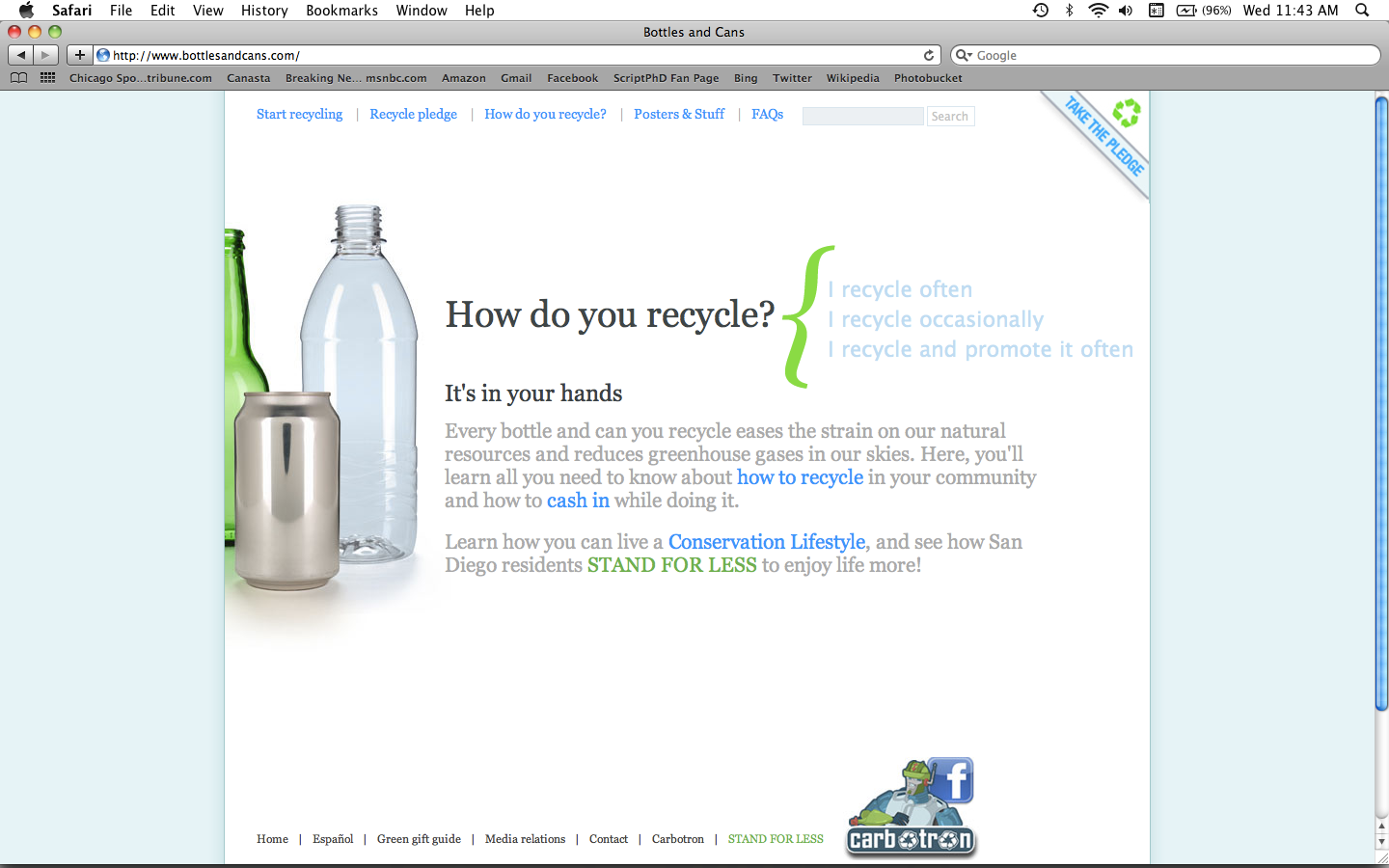
Nobody likes being told what to do. Any parent of a 2-year-old toddler can attest to this. And no one likes being guilted into doing something. Neither is a strong motivation for long-term behavioral change. Where RIESTER veers smartly from this staid formula is in fully engaging with their audience on a nonjudgemental level. Crushing and recycling a can, something that can hardly be compared to the equivalent of, say, buying a Prius, becomes significant to them. Take a look at the CalRecycle website pictured on the left. It asks rather than tells, and it includes all participants of recycling, even those who never recycle. That’s significant. Too many environmental initiatives fall into the trap of preaching to the choir, never reaching a new target audience that hasn’t been exposed to the message. Here, an interactive campaign groups you togehter, whether you’re a granola-eating, hemp-clad, lean mean green machine, or you have never even thought about recycling before. Engaging the entire community together, and providing them with the necessary know-how for sustainable behavior, is the only functional long-term solution.
Why it works:
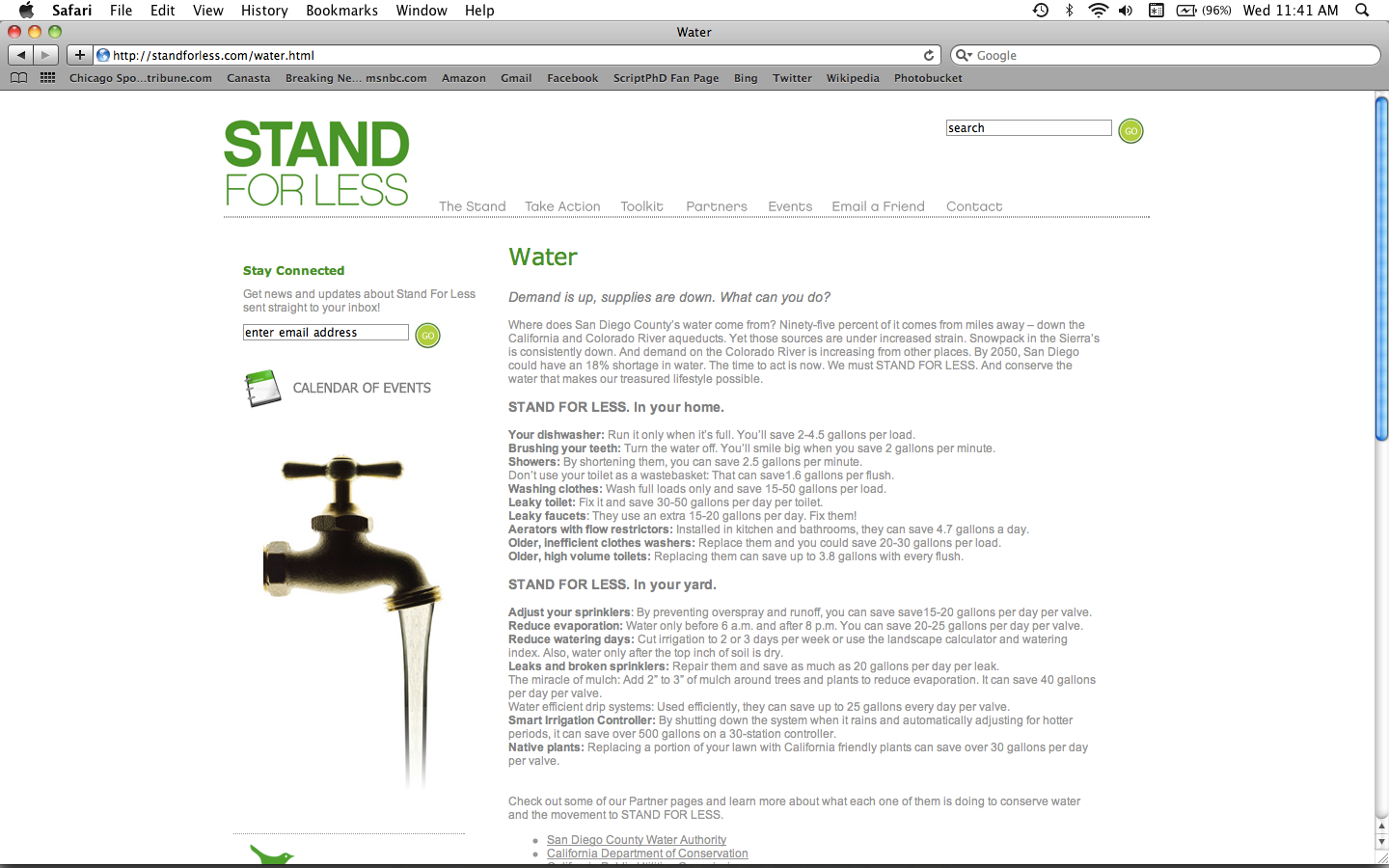
RIESTER’s green campaigns, especially STAND FOR LESS, are truly interactive, and go a long way towards continuing long-term conversations about community sustainability. The advertising spots are really just the start of the conversation. For this, the STAND FOR LESS campaign was the rightful recipient of a 2010 Addy Award for an integrated campaign. The STAND FOR LESS site features a blog with a constant news stream, a calendar of events to get involved, a toolkit for individual activists who want to get involved, and informative content on ways to incorporate eco-conscious behavior into one’s own household. They take advantage of social media in a meaningful way, with both Facebook and Twiter feeds for people to exchange ideas. Research has clearly shown that simply providing people with information, especially in single doses, has little effect on individuals and businesses. Instead, a community-based model of social marketing has emerged to encourage sustainability practices. STAND FOR LESS is an important start in what will eventually be a common model of urban initiative.
What other green science campaigns can learn from this one…
In selling green science smartly, don’t recycle ideas, pardon the pun. Be edgy, different, and think outside the box. A recent Gallup poll (released April 09, 2010), revealed that green behavior in the United States, although common, is not changing. Standard eco-friendly practices such as recycling, low-wattage light bulb replacement and purchasing decisions, have either increased marginally or not at all since 2000, when green advertising began bombarding the airwaves. Furthermore, there is an enormous collective guilt over the ideal we know we should be achieving, yet consistently fall short of. Advertising that feels sanctimonious will only reverberate this effect, rather than motivating people into significant change. When many people either don’t know where to start or feel overburdened by incorporating yet another lifestyle change into an already overscheduled and busy day, it’s important (as the STAND FOR LESS campaign does) to remind them that small, inexpensive actions incur an additive effect and do make a difference. The use of humor, irony and droll, tongue-in-cheek moments, like imagining how good recycling must feel for the bottle, are far more effective in sparking and retaining dynamic conversation than either direct information or ham-handed appeals. Getting people’s attention like this is especially critical in the face of an onslaught of green noise in labeling and product availability, many of which are under no obligation to prove their claims. Indeed, the New York times noted that as of 2008, the advertising industry was significantly pulling back on eco-friendly marketing due to growing public skepticism of ads with environmental messages. The take home lesson is that agencies will simply have to work harder and smarter than back in the days when we were all a little green about being green.
ScriptPhD.com caught up with RIESTER Executive Creative Director Tom Ortega and Editorial Director Jim Breitinger to talk about their conservation work, the thought process fueling their smart “green” creative, why interactive is imperative, and what makes for good environment advertising in our cluttered, hyper-messaged media.
ScriptPhD: RIESTER proudly proclaims themselves as a collective of “brand activists.” Can you shed a bit more light on your definition of “brand activist” and how that influences your creative philosophy when it comes to science, technology and particularly sustainability advertising?
Tom Ortega: RIESTER has a long history of working with clients who have a purpose beyond commercialism, which is the statement that you see on our website. What that means is that our clients do much more than serve an immediate need for a consumer. So while we do a lot of work for [non-sustainable] products, we’ve found other connection points as well with the consumer so that the consumer can develop a longer-lasting relationship with those brands. The idea of becoming activists has two sides to it as well, because we feel that when consumers become true believers in a brand, they themselves become activists for those brands. And their voice is certainly greater than any voice that can be heard. We all know the power of the word of mouth, right? That’s what we’re able to create, whether it is for a pure sustainability campaign, or a packaged good product that really connects with the consumer.
Jim Breitinger: The term is also an organic outgrowth of, really, who we are, the kind of business we go after, and the clients we have. We become incredibly passionate about who they are and what their cause or product is. We’re the activists who go the extra mile for the client.
SPhD: So much of impacting pro-environment and sustainability efforts involves changing behavior and wielding persuasion. Ironically enough, this is exactly what advertising is in the business of doing. In your minds, have agencies been underutilizing the power of social marketing and what are some of the areas you’d like to see it expanded, both in content and risk-taking.
TO: Agencies, over the past five years, have become very smart about human behavior, and recognizing how brands connect with that behavior. What you’ve seen over the past years has been a growth of research and planning involved in advertising campaigns. So I don’t know if it’s been underutilized. What makes RIESTER different is that we have an in-house planning department that has researchers who are working here every day who understand social change, human behavior, why people do things—whether it has to do with recycling or buying a specific product. For us, behavior change is something that we take very seriously, it leads most of our campaigns when it comes to research and developing a foundation for the campaign.
Part of what’s tricky about advertising in the “green” arena is the word “green,” which has certainly lost its meaning. This is due to the greenwashing that has occurred throughout the past number of years. It reminds me a lot of the nutritional advertising that was done years ago with all of the blanketed “fat free” nutritional messages that were put out there. I think environmental marketing runs the risk of neutralizing itself with messages that really aren’t relevant or really don’t have meaning them. It’s important to understand that consumers are smart, consumers are worn out and getting message fatigue, and we have to make sure that this message has meaning behind it. When we’re telling people a certain product or behavior has sustainable practices, it darned well better fit that bill.
SPhD: As is the case for many science and technology ads, there is a tendency for environment, social awareness and sustainability messages to be anodyne or milquetoast. One of the things I love about your California recycling campaigns (video and print) as well as the Maricopa County Clean Air campaign is the use of humor and irony. Very clever stuff! Take us through some of the creative strategy for these spots and how you hoped to get the messages across.
TO: Well, human beings want to be entertained. We owe it to them, if we’re going to take up thirty seconds of their time, to entertain them to a certain degree. Because if we don’t, they’re not going to pay attention to the message. So it’s important for us to create a message they’ll want to watch. Humor is a great way to do that. It’s also a wonderful way of breaking down barriers that might already be there. The idea of air pollution is sort of a hackneyed idea. We’ve been hearing it over and over again for years, and you have to get people to pay attention to that message, to demonstrate that it is relevant to their lives.
For the California recycling campaign, “Good For the Bottle, Good For the Can,” it was funny because in California, people really understand, they get it. It’s the original environmental state. But in order to get deeper with it, we had to commit it a lot differently, and not just state that it’s good for the planet. That message has already reached the target that cares about that. We had to reach a different target, and talk about the fact that it was good for these cans and bottles, and sort of personify these as beings that would go on to live another life. You have to get people to look at things differently—that’s part of behavior change.
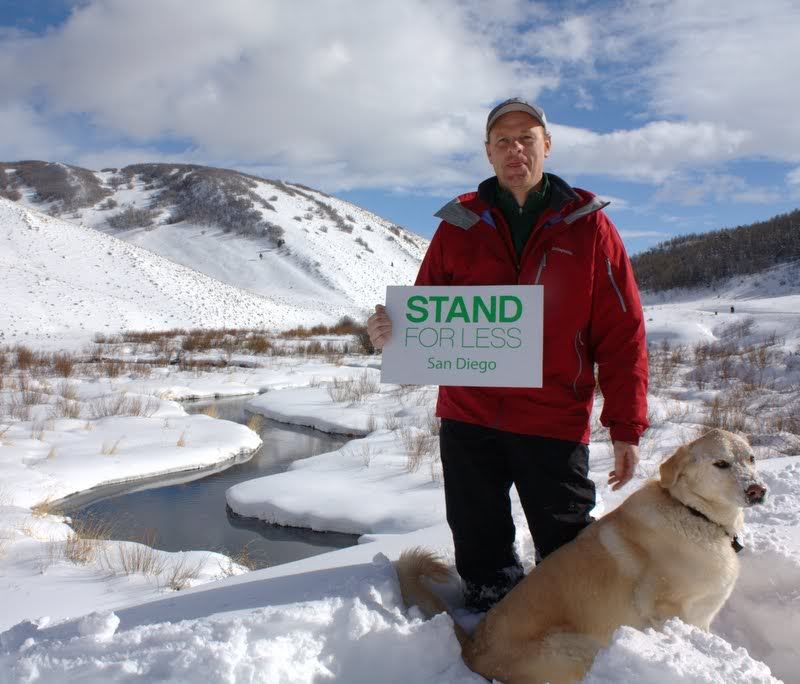
SPhD: Let’s spend some time talking about the impressive STAND FOR LESS campaign. When you have a city approach you about a wide-scale campaign like this, what are some of the first things that go into laying down a foundation, or groundwork for the overall message?
TO: The most important part of that campaign was to organize the coalition of members, the people and partners to this, and that was really spearheaded by Mirja Reister, our executive planner. She worked tirelessly to bring together partners from the private and public sectors to get them in the same room and working together. In order for it to be a successful, integrated, city-wide campaign, we had to have all these people participating and taking an interest in this.
On the communications side, we worked on creating the STAND FOR LESS blog and the social network link that we have created. It’s an amazing site to look at in terms of both the outreach that has occurred and the momentum that the campaign has managed to develop.
SPhD: Who are some of the people you worked and consulted with as you developed the TV and radio spots? I know Jim mentioned you worked with Ed Begley, Jr.
TO: Ed was there at the launch of the campaign because he has such a key interest in this. [For] the television campaign that you saw, the original thought on that boiled down to: the message is “STAND FOR LESS,” so the advertising itself has to “STAND FOR LESS.” We wanted 15 second commercials, not 30 second ones. We wanted a stripped-down set, not an elaborate set. We wanted the spots to be cost-efficient in terms of the money that was used to make them, because we wanted to demonstrate that we could make commercials for less. Everything that went into that, even the production itself, was a fully sustainable production. There had to be recycling on the set. We paid attention to the location where we shot it, because we didn’t want people to drive far. Everything was thought out. We wanted to make sure that we weren’t just saying it, but that we were doing it.
SPhD: What kinds of effects has the campaign incurred in San Diego? Any lessons from it for future work (good or bad)?
JB: It gets back to the whole kernel or the idea behind the campaign, of bring together people who were already working on these issues. When I’ve been in San Diego (and I moved there to work on this campaign), I was really focused on finding people on the ground who were really making a difference. Finding those truly authentic characters who were standing for less in San Diego. And I think it’s made a big difference in the community in that sense, that it has brought those people together, the Surfrider Foundation, The Center For Sustainable Energy, San Diego Gas and Electric, the different government entities we’ve worked with. These are people who are all doing great things but not necessarily communicating on a daily basis. In that sense, I think that’s been the greatest effect on this campaign, is uniting people who have that common cause, who really care about sustainability.
As for behavioral change in the population, there’s been progress and I’ve posted a few things on the blog to that effect. [The mayor of San Diego and the US Navy are both Standing For Less.] Definitely increases in recycling, and there have been other benchmarks of success on this campaign.
SPhD: For a campaign as ambitious and far-reaching as STAND FOR LESS (effectively changing the behavior of the sixth-largest city in America), how important was the use of interactive (which included a website, PR, and radio and television spots)? How important is the use of interactive in general in green and sustainability advertising?
TO: That’s key, that’s where your community is. That’s also where you build your community. It starts through websites, you’ve got to use other networks like Facebook and so forth, and that is essential to give people a place to go. You have to give people a website to go to for information. And then you have to give them outlets where they can connect with other people who are like them. That’s how you build a community that stands for less. The internet is at the heart of a campaign like this. Twenty years ago, we would have told you TV was it. TV was simply, in this case, the tool to drive awareness and to get people to the website. But once you get people on that website, and connected, that’s where the inertia begins.
JB: And that’s the brilliance of this campaign. It connects the dots, it connects all these different tribes that are out there already and helps with the broader population, who may or may not be paying attention.
TO: If you’re going to start a conversation like [this] with someone, it’s essential to keep it going. That’s why you have these social networks that you have to utilize. You can’t just talk once about it. And it goes back to behavior change. Behavior change doesn’t happen overnight—we didn’t develop these behaviors overnight. We didn’t start drinking out of plastic bottles overnight. Getting people to stand for less or to drive less or to think about where their food comes from, these are behaviors that will take a LONG time for us to change, but if we keep that dialogue going, you really stand a better chance of doing it.
JB: One of the things about this campaign is that although it’s under the banner of “standing for less,” it’s not about austerity or denial. There was a lot of messaging in the late 70s, when I was a kid, that the environmental movement turned off a lot of people, because it was about denying yourself. With STAND FOR LESS, a lot of the things I’ve written about, I’ve tried to emphasize the idea of creating more, more green space, or an opening where you have a richer life. You don’t have to drink out of a single-use plastic water bottle to get your water, and it’s been fun to point out things you can do without necessarily denying yourself anything.
SPhD: I have long advocated the power of blogging as a great platform to extend ideas, start and continue important conversations and convey an agency’s (or company’s) cultural and creative identity. The RIESTER blog stands out for some really terrific editorials and posts on everything ranging from the environment to health and education. Why do you have such a cross-agency commitment to blogging?
JB: At the end of the day, we’re in the idea business. And as you point out, a blog is just a place to post things. But it’s a great platform for us to put the ideas out there. And we’re an agency full of people who have a lot of great ideas.
TO: It goes back to the idea of us being activists for our clients. We’re passionate about our clients, and the topics that we take on. It could be about recycling or selling salsa. We believe in it, and we’re going to live it every day. Blogging is a big part of that.
JB: The other thing is that we’re a creative agency, so people want to come to our website and that’s the first thing they want to see—our work. A blog is really a great place to both showcase some of our creative work and to provide some depth to it, and to explain what’s behind it and who we are and what’s driving us to create what we do.
SPhD: Finally, tell our readers a bit about the RIESTER Foundation and their efforts during the recent Haiti tragedy.
TO: We’ve spent so many years talking to people about their behavior and changing their behavior, and recycling and driving less and all that stuff, it became time for us to do something ourselves that had a lot of meaning to it. Securing habitat in threatened areas became a way for us to do that. The RIESTER Foundation became a way for us to put our money where our mouth was. You emailed me a question about how advertising agencies aren’t often thought of doing these types of things, and the fact is that we create things that live and die in a matter of a month or two, when it comes to ads. To be able to do something that has a longer life and that can live far beyond us is very important to us.
Check out RIESTER’s creative work, campaigns and blog on their main website. Thank you to Executive Creative Director Tom Ortega and Editorial Director Jim Breitinger for taking the time to be a part of our Earth Week edition of “Selling Science Smartly.”
~*ScriptPhD*~
*****************
ScriptPhD.com covers science and technology in entertainment, media and advertising. Hire our consulting company for creative content development.
Follow us on Twitter and our Facebook fan page. Subscribe to free email notifications of new posts on our home page.
]]>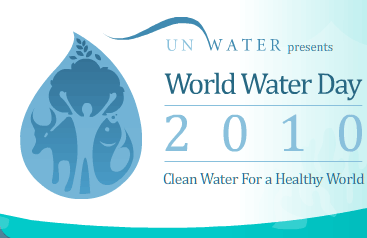
“Whiskey is for sipping, but water’s for fighting.” —Mark Twain
Today, March 22, 2010, is World Water Day, an initiative formed at the 1992 United Nations Conference on Environment and Development. As we head into Earth Day next month, no environmental issue carries more sociopolitical, economic and health ramifications than a clean and abundant supply of water. Some of the highest global morbidity and mortality rates are directly related to lack of access to clean water—both in contracting communicable diseases as well as agricultural impact that aggravates famine. At the heart of this discussion is a frenzied (and growing) thirst for bottled water; Americans alone bought more than 29 billion bottles in 2007. If you have long suspected that bottled water is not good for the environment, but only had a hazy notion about the specific consequences of the bottled water industry, Tapped, an Atlas Films documentary about to be released on DVD, will knock your socks off. The film expertly chronicles the insidious practices of bottled water companies and the dire consequences it has on our collective health, communities, environment, economy and policy in ways you never would have imagined. Our special World Water Day post under the “continue reading” cut.

Tapped features sparkly footage of bodies of water the world over, from oceans to rivers, lakes, ponds and streams. The sounds of burbling brooks and waterfalls throughout the film feel primal and urgent, as much a reminder of nature’s fragile beauty as they are a ticking clock, and the countdown is not in our favor. An opening salvo in the film’s first sequence sets the tone with a chilling statistic: by 2030, two thirds of the world will lack access to clean water. The film quickly segues into a scary question that is explored throughout the film; what happens if you take water, a requirement for life on earth, and turn it into a commodity, controlled by private corporations?
The answers are disturbing.
The first third of the film focuses on the three largest bottled water companies in America; Nestle, Coke and Pepsi. Nestle operates in the United States under multiple brands, including Poland Springs, Arrowhead, Ozarka, Ice Mountain, Deer Park and Zephyrhills. Coke owns Dasani and Pepsi owns Aquafina. Bottled water started as a small trend in America in the 1970s when Perrier introduced bottled sparkling water to urban professionals by way of small green glass bottles. But it wasn’t until 1989 when plastic bottles made from more mobile and lightweight PET plastic were introduced that the business really took off. At that point Coke and Pepsi got into the game because their soda sales were declining. The industry continued to grow at explosive rates, and by 2007 Americans inexplicably spent more than $11.7 billion on a free natural resource, something that was rightfully pegged in the film as “one of the greatest advertising and marketing feats of all time.”
Where these companies get their water is a controversial issue. Often, they buy small, cheap plots of land in small communities, install a water pump to access the community’s underground supply, and pump to their heart’s content with little-to-no overhead, taxes, regulation or accountability. The laws governing water usage in the US make this scenario possible. Surface water (oceans, lakes, rivers, etc.) is held as a public trust, and hence protected from poaching, or water mining, as the practice is often called. The loophole, however, is that underground water in most states is governed by a law established in the late 1800s called “absolute dominion,”
which basically translates to “he who has the biggest pump gets the most water.”
Small communities all over the country have been subject to this process, and often don’t know it’s happening until the corporations have already set up an operation. Communities in these situations have started organizing to stop the corporations from taking their water, but it is an uphill battle as corporations have teams of lawyers, lobbyists and other resources to advance their interests. In one small town in Maine profiled in the film, Nestle has set up a Poland Springs pump where it costs about six cents per gallon to pump water out of the ground. (A recent fight by Maine citizens, documented here and here has caused considerable headaches to Poland Springs.) The corporations then turn around and sell the water for $6.00 per gallon. This practice is happening in states around the country including California, Colorado, Arkansas and Michigan. The film points out that these corporations are setting a dangerous precedent that will allow them to control water sources in the future, which is why activists and concerned community members are desperately fighting to change the laws. Even citizens of Serbia, the birthplace of ScriptPhD.com editor Jovana Grbi?, are crying out against privatizing and selling its 300 natural springs, the most abundant in all of Europe, for water production.
When Congress tried to hold the water manufacturers accountable for depleting municipal water sources in times of drought, Pepsi testified that their water pumping had nothing to do with lowering the water levels of the local lakes and rivers. In a particularly surreal moment of the film, a Pepsi official tells a congressional panel with a straight face that beavers and their dams are to blame for lowered water levels. Dennis Kucinich (D, Ohio), the congressman leading the panel, counters back, “How many beavers would that take?” It might be funny if it weren’t so alarming. Take a look at this CNN report that resulted from revelations during the Congressional hearings:
The Environmental Devastation of Plastic
Act II of Tapped reveals the deleterious ecological and health fall-out from plastic bottles. Most of the bottles end up in a landfill or the Pacific Ocean. Often called “The World’s Largest Dump,” the Western Garbage Patch, located between Hawaii and California, is twice the size of Texas and largely composed of plastic. (An Eastern patch also exists, and video of it has been compiled here by the marine research group Algalita.) The film takes us to a bottling plant in Corpus Christi, Texas where local residents are dying from cancer due to the benzene emissions from the plant. They are often stuck living in a dangerous situation because no one wants to buy their home due to the close proximity to the plant. The film interviews several of these residents in one of the saddest moments of the documentary. One such interviewee, a man dying of cancer, says that were it not for the love of his family, he would feel like a piece of trash, his body the unwilling receptacle for toxic emissions from the faceless corporation making plastic bottles in his backyard. This man died shortly after the making of the film, and the film is dedicated to his memory.
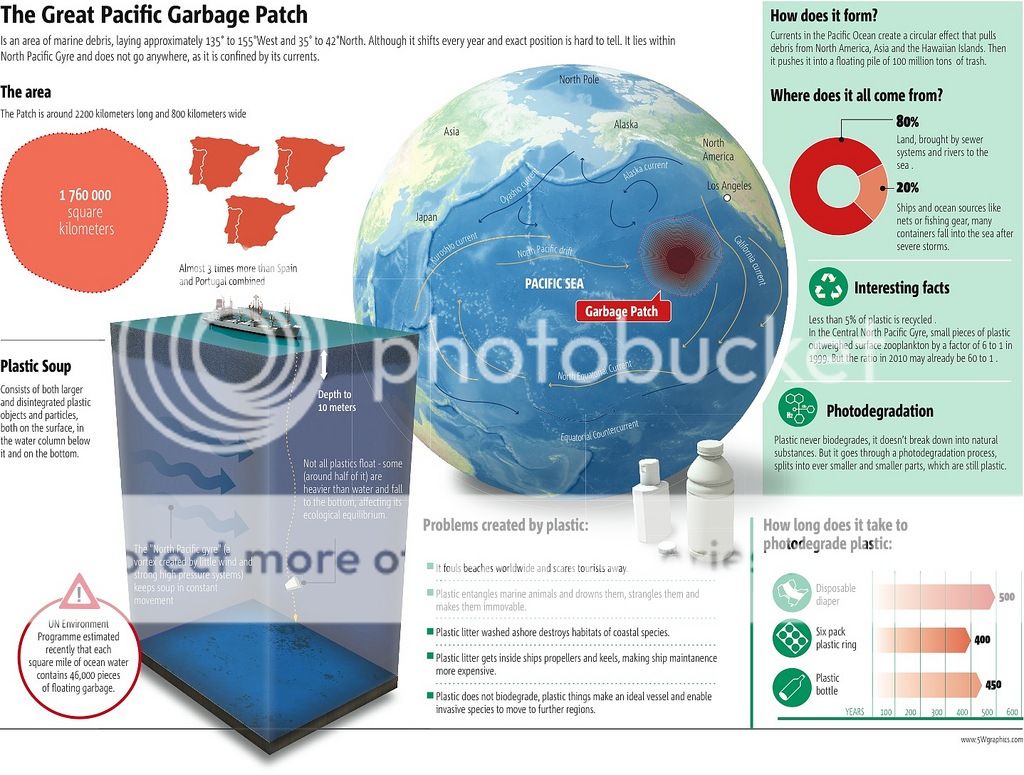
Captain Charles Moore, the founder of Algelita, appeared last week on David Letterman’s show to discuss the Garbage Patch:
About 40 minutes into the film there is a quick shot of a customer at Whole Foods placing his groceries on the conveyor belt at the cash register. The camera angle is low enough so we don’t see his face or the cashier’s face. We only see what he is buying; a sandwich, a bag of chips and a bottle of Smart Water. The image is a punch to the gut because that nameless, faceless scene has been me, too many times to count, and most likely it’s been you as well. The scene is a subtle reminder that every time we purchase a bottle of plastic water, we’ve voted “yes” for a system that is killing poor families in Corpus Christi (and elsewhere) and littering beaches in Hawaii with such large amounts of plastic that an army of dump trucks couldn’t clean it up. Even more insidious is the amount of microscopic plastic particles floating around in oceans from thrown-away plastic bottles. When one activist scoops up a handful of sand from a Hawaii beach, it looks like he’s holding a fistful of pulverized Lego’s; the plastic particles quickly replacing the sand particles. This is a result of what happens when people don’t recycle their bottles. Bottles left on the street are picked up by rainwater and washed into rivers and stream, and ultimately end up in the oceans. But recycling bottles is not exactly an entirely sustainable solution either, as the film points out. Municipalities who produce tap water, and who are in direct competition with bottled water, are often left holding the tab to recycle the leftover plastic bottles from their competitors, but with only a fraction of the budget that the corporations have.
BPA: Dangerous Chemistry
A more worrisome horror of plastic bottles is an insidious chemical called bisphenol A (BPA), used to make the hard, clear 5-gallon kind bottles most often found at a water cooler. Frederick Vom Saal, PhD at the University of Missouri, Columbia is a leading expert on BPA and its effects on human health. He calls it one of the most potent, toxic chemicals known to man because even in small amounts, it profoundly disrupts every single part of the developing male reproductive systems in lab animal studies, even at doses 25,000 smaller than any dose that has ever been studied. In larger doses, it disrupts the thyroid gland, and its been linked to a plethora of diseases from cancer to obesity, diabetes, and attention deficit and hyperactivity disorder. A recent study even found a link between BPA exposure and permanent fertility effects. These diseases have been killing people at increasingly higher rates over the last 30 years, a direct correlation to the amount of BPA floating around in consumer products over the same period of time. The FDA has not closely regulated BPA and for a long period of time, as the film reveals, relied on studies from bottle manufacturers (the people who make bottles out of BPA for a living!) that state BPA is not dangerous in small quantities. The Huffington Post recently published a series of articles revealing that BPA is found in cash register receipt paper and cardboard pizza boxes, among a host of other everyday items.

In a particularly effective scene from the film, filmmaker Stephanie Soechtig boldly asks an FDA official about their role in regulating BPA. A furious FDA press official abruptly interrupts the interview from off screen and states that if he knew BPA would be discussed, he wouldn’t have allowed the interview. The failure of the FDA to protect the public from a chemical as dangerous as BPA could be the last straw in the public’s tolerance for government incompetence and corruption, which explains why the FDA doesn’t want to discuss such a volatile subject. BPA is found in a whole host of consumer products including dental fillings, canned foods, food wrappers, food labels, and baby bottles. The good news is that due to mounting public and scientific pressure, the FDA is conducting a new study on the safety of BPA, but the $7-billion-a-year BPA industry will surely put up a fight to stop any regulation. To protect your own health, the film’s website says you should look for “BPA Free” labels whenever you buy hard plastic and avoid eating canned foods or drinking from hard plastic water bottles.
The soft plastic water bottles that most of us drink from do not contain BPA, but that doesn’t mean they are safe. As one expert in the film says, we don’t know the long term effects of drinking from PET plastic bottles. A recent British study showed that pregnant women exposed to phthalates, common across all plastics, gave birth to babies with gender defects. And in a particularly disturbing sequence from the film, the crew of Tapped buys their own samples of bottled water and sends them to toxicology labs for testing. Due to the large marketing and advertising budgets of bottled water makers, we have been led to believe for a long time that bottled water is safer than tap water. But the list of chemicals found in the bottled water, including styrene, dimethyl phthalate, and di-n-octyl phthalate, shatters that notion.
Tapped ends on a hopeful note, reminding us that change is possible, and highlighting the various battles that water activists and concerned citizens have won in recent years along with some tips for the consumer to drink filtered tap water from a reusable water container and to urge leaders to invest in our municipal water infrastructure. The Mayor of San Francisco banned bottled water at any municipal or government location. Seattle banned sales altogether at city events. Perhaps change is in effect. News outlets reported late last year that bottled water sales are starting to slump for the first time.
Look for Part II of this article containing an exclusive ScriptPhD.com Q&A between CaptainPlanet and filmmaker Stephanie Soechtig in the coming week as we continue to explore conservation issues and what can be done to enact positive change.
Take a look at this hair-raising 5:00 extended Tapped trailer:
Tapped is slated for official DVD release (with bonus features) May 1. Visit their store to purchase the DVD and Kleen Kanteen PBA-free water bottles.
CaptainPlanet is an LA-based, Northwestern University-educated eco-charged sustainability guru who loves film, psychology and saving the planet, one waterless urinal at a time…
~*CaptainPlanet*~
*****************
ScriptPhD.com covers science and technology in entertainment, media and advertising. Hire our consulting company for creative content development.
Follow us on Twitter and our Facebook fan page. Subscribe to free email notifications of new posts on our home page.
]]>